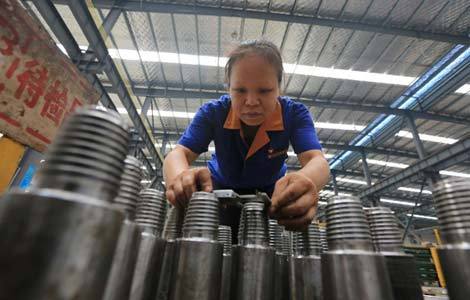Govt helps forestry industry take root
Updated: 2013-07-16 07:14
By An Baijie (China Daily)
|
||||||||

The government should put forward more measures to support forestry to both boost farmer income and protect the environment, said a senior political adviser and leading economist.
The area of forestry farms owned by village governments is about 2.7 billion mu (180 million hectares), Li Yining, an economics professor at Peking University, told China Daily during an exclusive interview.
Li, a member of the standing committee of the Chinese People's Political Consultative Conference National Committee, was a PhD tutor to Premier Li Keqiang in the 1990s.
The professor is leading a research group looking into possible methods to develop forestry.
The researchers, focusing on sustainable development, including mushroom cultivation, poultry and tourism, have examined forests in Liaoning province, the Guangxi Zhuang autonomous region, and Guizhou province.
"Take raising chickens on forest farms for example," the professor said.
"The forest provides chickens with sufficient food, such as wild worms, while their feces can enrich the forest soil."
In a report released in April, the researchers concluded that the forest economy could be doubled.
The sector's output was about 360 billion yuan ($58.64 billion) last year.
Developing forestry will also help mountainous regions, the report said.
There are 592 counties classified as struggling, of which 496 are in mountainous regions.
About 96 percent of village-owned forests have already been contracted to farmers, and the government will put forward more measures to help farmers develop the forestry economy, the State Forestry Administration announced on June 21.
Most forestry farms should speed up reform, since many are inefficient, lack proper management and make little profit, Li said.
Some State-owned forestry farms are more like government bodies rather than market-oriented entities, he said.
The State-owned farms could be partly contracted to professional companies, or partly transferred into State forestry parks, to expand income sources, the professor added.
Statistics released by the State Forestry Administration in January showed that there are 4,507 State-owned forestry farms nationwide, covering an area of 62 million hectares.
About 3,770 of the State-owned forestry farms, or 84 percent, were classified as struggling, the administration said.
In July 2012, the State Council's general office issued a guideline on development of the forestry economy.
The guideline required that the development should go hand-in-hand with the protection of forests and wild animals. They should also be developed to tackle sandstorms.
The guideline also stipulated that financial agencies should give loans to farmers, and the central government should finance projects with low-interest subsidies.
Liu Xiangyun, a farmer in Wulian county, Shandong province, who contracted a forest from the village government, said that the infrastructure should be enhanced in the mountainous region.
"I planned to raise chickens in the forest, but the plan has been on hold for years because the electricity supply could not reach the forest," he said.
Cheng Zhiqiang, an economic PhD from Peking University's Guanghua School of Management, said that the commercial insurance should cover the forestry economy.
"Forests are at high risk since they need long-term investment," he said. "These risks should be partly shared by the insurance agencies."
anbaijie@chinadaily.com.cn
(China Daily USA 07/16/2013 page6)

 Obama urges restraint amid protests
Obama urges restraint amid protests
 Putin wants Snowden to go, but asylum not ruled out
Putin wants Snowden to go, but asylum not ruled out
 Apple to probe death of Chinese using charging iPhone
Apple to probe death of Chinese using charging iPhone
 Investment falters as industrial activity flags
Investment falters as industrial activity flags
 Rape victim's mother wins appeal
Rape victim's mother wins appeal
 Reproduction of 'Sunflowers' displayed in HK
Reproduction of 'Sunflowers' displayed in HK
 Land Rover enthusiasts tour the world
Land Rover enthusiasts tour the world
 US star sprinter fails drug test
US star sprinter fails drug test
Most Viewed
Editor's Picks

|

|

|

|

|

|
Today's Top News
China calls for new talks on Iran nuclear issue
Global warming may largely raises sea level
Putin wants Snowden to go, asylum not ruled out
Top foreign study destinations for Chinese
Trailblazer reaches out to inmates on death row
Air crash payouts could differ
Cabinet promises more funds for smaller firms
Capital prison tests therapy on inmates
US Weekly

|

|






